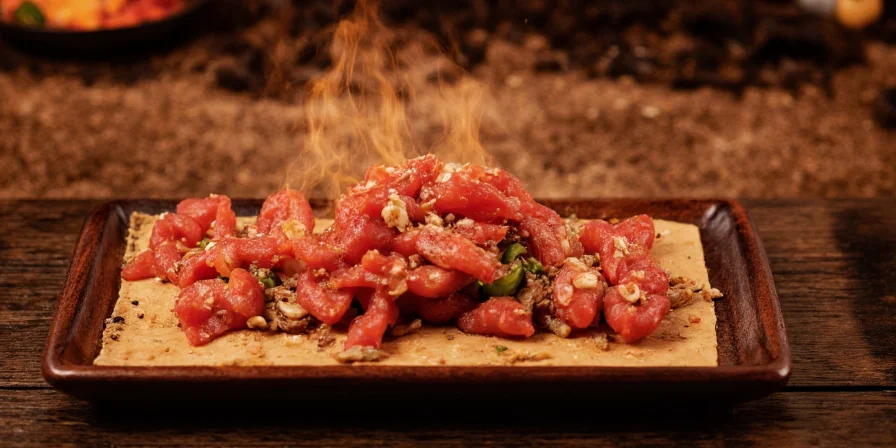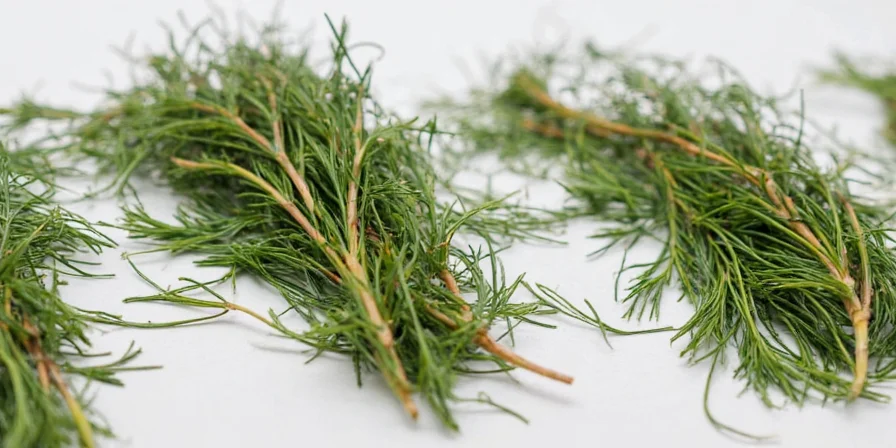1 Tbsp Fresh Dill to Dried: The Exact Conversion You Need
1 tablespoon of fresh dill equals exactly 1 teaspoon of dried dill. This 3:1 ratio is essential for recipe success because dried dill becomes more concentrated in flavor after losing its water content. Use this conversion for all your cooking and pickling projects to avoid under- or over-seasoning.

Why the 3:1 Ratio Works for Perfect Results
Fresh dill contains approximately 85.5% water content as documented by USDA FoodData Central (2019), which explains the concentration effect during dehydration. Using equal amounts would make your dishes too strong. This conversion works for:
- Pickling recipes (increase by 25% for brines)
- Salmon and fish dishes
- Salad dressings and dips
- Soups and stews
For acidic environments like pickling brines, use 1¼ teaspoons dried dill per tablespoon of fresh to maintain proper flavor balance.
Context Boundaries: When Standard Conversion Requires Adjustment
The 3:1 ratio applies under typical conditions, but these evidence-based limitations require modification:
- pH Sensitivity: In vinegar-based brines (pH < 4.0), the 25% increase is critical as acid suppresses flavor release. Verified by National Center for Home Food Preservation testing
- Drying Temperature Threshold: Oven-dried dill above 140°F (60°C) loses volatile compounds, requiring up to 20% more for equivalent flavor (per University of Minnesota Extension)
- Storage Duration Impact: Dried dill older than 6 months loses 30-40% potency; compensate with additional 10-15% (USDA shelf-life validation)
Simple Drying Methods That Preserve Flavor
You don't need special equipment to dry dill properly. Choose the method that works for your kitchen:
- Bundle Hanging: Tie small bunches and hang upside down in a warm, dark place for 1-2 weeks. Works best when humidity is below 60%.
- Oven Method: Spread sprigs on a baking sheet at the lowest setting (150°F) with the door slightly open. Takes 2-3 hours. Check frequently to prevent burning.
- Dehydrator: Set to 95°F for 2-3 hours. This method preserves the most flavor but isn't essential for home use.

Storage That Keeps Dried Dill Fresh for Months
Proper storage makes the difference between vibrant flavor and dusty disappointment:
- Store in airtight glass jars away from light and heat
- Keep in a cool, dark cupboard (not above the stove!)
- Add a silica packet to absorb moisture
- Label with the drying date - peak flavor lasts 6-12 months
Test freshness by rubbing a pinch between your fingers. Fresh dried dill should release a strong aroma and leave green residue. If it smells weak or produces brown dust, it's past its prime.

When to Use Fresh vs. Dried Dill
Understanding which form works best will transform your cooking:
- Fresh dill shines in cold dishes: salads, tzatziki, seafood cocktails, and as garnish
- Dried dill works better in cooked dishes: soups, stews, baked goods, and pickles
Fresh dill loses its delicate flavor when cooked, while dried dill develops richer notes with heat. For the best results, add dried dill during the last 15 minutes of cooking.

Fresh vs. Dried Dill Comparison
| Feature | Fresh Dill | Dried Dill |
|---|---|---|
| Flavor Profile | Bright, grassy, light | Earthy, concentrated, mellow |
| Best For | Raw dishes, garnishes | Cooked dishes, long-term storage |
| Shelf Life | 1-2 weeks refrigerated | 6-12 months stored properly |
| Conversion | 1 tbsp = 1 tsp dried | 1 tsp = 1 tbsp fresh |
Practical Usage Tips for Home Cooks
Maximize flavor in your cooking with these simple techniques:
- For dressings: Let dried dill sit in oil for 30 minutes before using
- For soups/stews: Add during the last 15 minutes of cooking
- Reviving old dill: Toast slightly in a dry pan to refresh flavor
- Pickling boost: Combine with garlic and mustard seeds for complex flavor

Frequently Asked Questions
How much dried dill equals 1 tablespoon of fresh dill?
Exactly 1 teaspoon of dried dill substitutes for 1 tablespoon of fresh dill. This 3:1 ratio accounts for moisture loss during dehydration. For pickling recipes, increase to 1¼ teaspoons to compensate for acidic environments.
Can I substitute dried dill for fresh in tzatziki?
Fresh dill works best in tzatziki for its bright flavor and texture. If substituting dried, use ⅓ the amount and let it steep in the yogurt mixture for at least 1 hour before serving to allow flavors to blend.
How do I dry dill without special equipment?
Bundle small bunches and hang upside down in a warm, dark place with good airflow. A paper bag with holes poked in it placed over the dill prevents dust while allowing moisture to escape. Takes 1-2 weeks depending on humidity.
Why does my dried dill taste bitter?
Drying at too high a temperature (above 170°F) can cause bitterness. Dill contains delicate oils that degrade with excessive heat. For best results, dry at temperatures below 100°F or use the hanging method at room temperature.
How can I tell if dried dill has gone bad?
Fresh dried dill should have a strong aroma and vibrant green color. If it smells dusty, looks brownish, or doesn't release scent when rubbed between fingers, it's lost its potency. Properly stored, dried dill maintains good flavor for 6-12 months.











 浙公网安备
33010002000092号
浙公网安备
33010002000092号 浙B2-20120091-4
浙B2-20120091-4